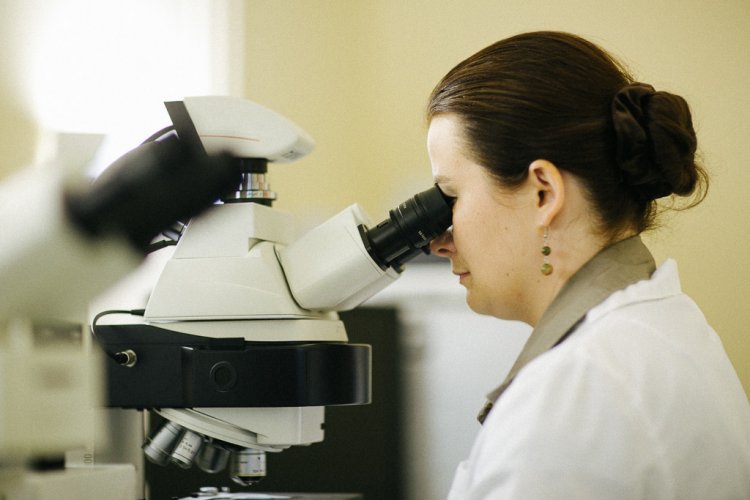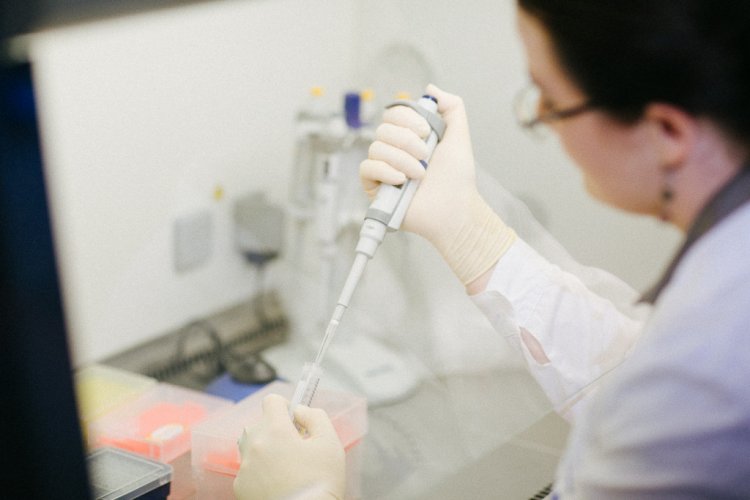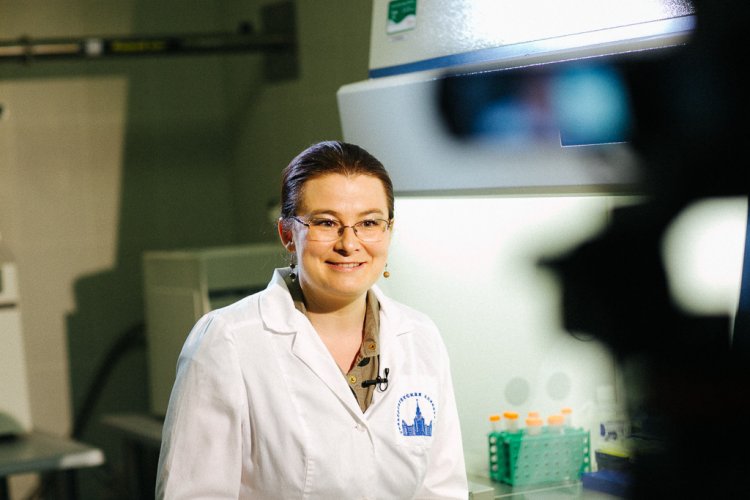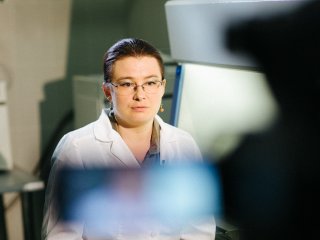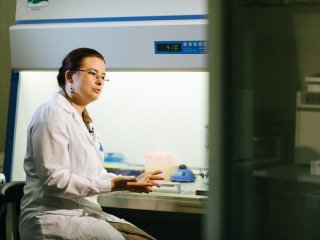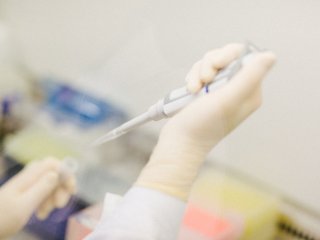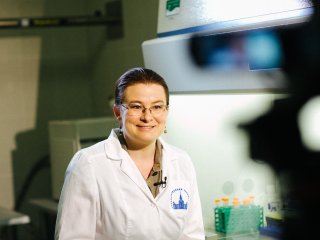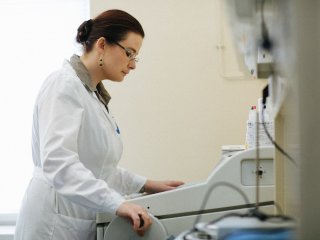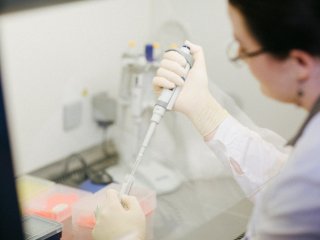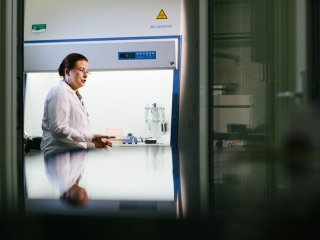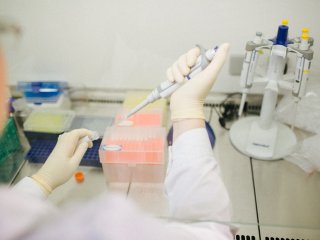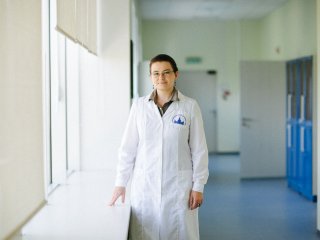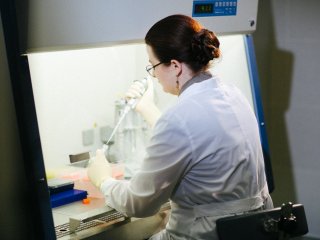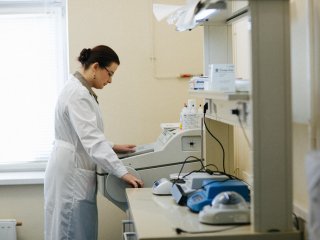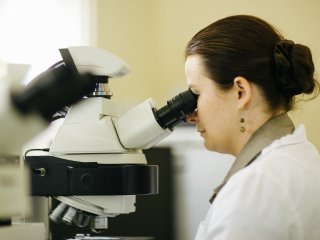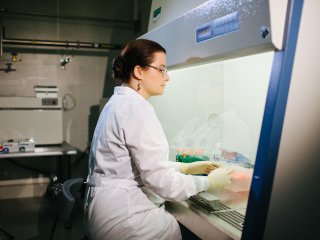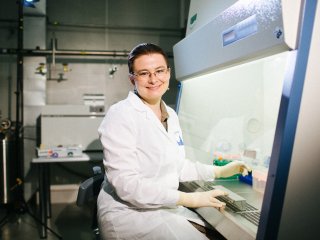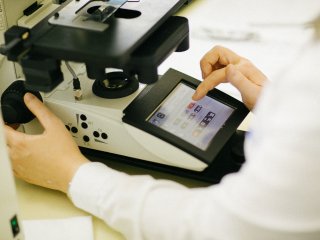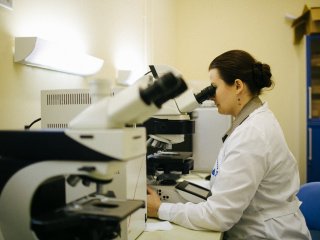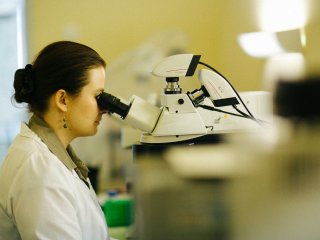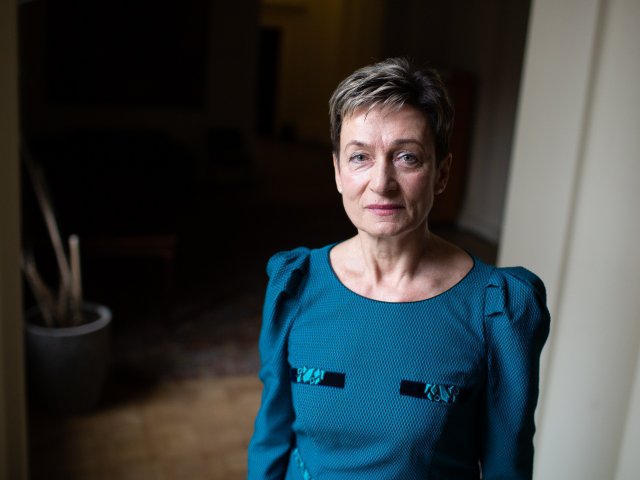What do we know about regenerative medicine? Many people must think that it is something from cosmetology. It is not so. At present, the methods of regenerative medicine are actively used for treating diseases and injuries, especially when the chances for recovery and even survival are low, while other therapy methods have exhausted themselves. These are special therapeutic approaches that allow for restoring the tissues damaged or struck with disease, for instance with the help of human or animal stem cells. Though being modern, this area of research has been a part of medicine for almost 25 years and continues to develop in many countries.
From the interview with Anastasia Yurievna Yefimenko, candidate of medicine, head of tissue reparation and regeneration laboratory at the Institute of Regenerative Medicine under the Medical Research and Education Center of MSU, Scientific Russia has learned what innovations have been worked out in the field of regenerative medicine, and what makes this area of research unique in general.
- Can we talk today about regenerative medicine being a new branch of medicine in general? To what extent does it allow for improving the health of patients?
- Regenerative medicine today is not a new branch, but a new type of medicine. Regeneration is ability of live organisms to restore the lot or damaged tissues and cells. Till recently, medicine has imposed influence on the functions of cells with the help of drugs mostly suppressing adverse processes and promoting the treatment of diseases.
The ability of medicine to restore the damaged or lost tissues, as well as to grow new structures was a dream. By today, this dream has been turned into reality.
Regenerative medicine is based on new unprecedented achievements of biologists, chemists and physicians, as well as the specialists in development biology. The correct term for the new area should be regenerative biomedicine instead of just regenerative medicine, as it comprises closely connected interdisciplinary fields of science, which help each other to understand which tissues can regenerate and be restored in case of damages and diseases, as well as how this knowledge can be translated into therapeutic approaches.
Such methods are badly needed. Almost all severe diseases lead to irreparable damage of unique functions that various tissues and organs have. The mission of regenerative medicine lies in learning how to replace them, while in the perfect world the task is to understand how human organism copes with the problem and render aid to it. In this sense, it is fundamentally different from all other areas: both clinical medicine and medical science.
Regenerative medicine studies universal mechanisms which are incorporated in all tissue and systems of live organism. The understanding of these universal mechanisms with the help of one successful discovery will allow for inventing new approaches to treating the disorders of various organ and systems.
- What does the tissue regeneration process with the help of stem cells look like?
- Stem cells are the main cell workers responsible for replacement of dead or lost tissue cells. They have been discovered in all tissues, yet are different in potency. At present, many various types of stem cells are described. Some of them can be isolated from different tissue of human organism and got into culture.
One of the key tasks that regenerative medicine has lies in studying the properties of stem cells and conditions of their successful functioning. The practical result of this research is the attempt to use these unique cells as a cell medication to be introduced into the tissue that needs replacement with the launch of differentiation process – specialization in required types of tissues. It is not an easy task.
Initially, high expectations as to the success of regenerative medicine approaches failed to be met to a large extent. Today, we observe a certain comeback, as it has become obvious that we should better understand how the stem cells function and what the best way of using their unique properties is. In this respect it is important to reconsider the concept of regeneration form, yet not from the viewpoint of individual stem cell’s action alone, as any stem cells of human organism (the results of serous research have shown it) exist in a special surrounding – microsurrounding – which is called the niche of stem cell. It is a specific set of various cell, matrix and signal components, small molecules which control the function of stem cells. On the one hand, it allows the cell to preserve the property of stemness. On the other hand, in case of activation at damage one should interpret the signal in the right way and launch the stem cell differentiation in the required direction.
- Is it possible to restore a part of brain’s function after serious injuries?
- Brain has stem cells of its own – neural stem cells. They are activated in case of injury, but it is often not enough. This tissue is so complex, while the interaction among cells is so complicated that the regeneration of cellular composition alone does not mean the restoration of the organ’ functions.
At present, the scientists are active in working out the methods of obtaining neural cells, for instance for treating Parkinson disease – specific dopaminergic neurons. The scholars learned how to get them from stem cells of a special type, but they feature much lower differentiation ability if compared to embryo cells. This problem sufficiently limits the opportunities for development of new drugs.
However, the scientists made a discovery in 2006. Specialized cells can be returned into embryo stem state by t way of introducing several genetic structures with transcription factors. These are induced pluripotent stem cells (iPS-cells). Now, the scholars are able to get various types of neurons and other cells of nerve tissue from such cells in laboratory conditions. Numerous studies are conducted today in an effort to use these approaches for treating neurodegenerative diseases. New interesting areas associated with treatment of post-apoplectic conditions are being explored in an effort to limit damages and promote the improvement and regeneration of brain tissues.
The scholars working at the Institute of Regenerative Medicine under the Medical Research and Education Center and Fundamental medicine Faculty of MSU carry out this type of research too. On the one hand, the studies are aimed at searching for factors making radical impact on the functions of neurons which can be introduced as a genetic structure. It is the so-called gene therapy (an area of regenerative medicine that suggests introducing certain genes controlling the function of cells and letting create a locally good expression of required factor assisting to the survival of neurons). On the other hand, an attempt is made to find a complex of factors making impact on various types of cells in human brain, and by way of introducing them to assist to restoring the neurons’ microsurrounding for survival of neural stem cells or stimulating them is case of injury, so they can replace the lost neurons and promoted the establishment of new relations among neurons in the human brain.
- How does cell-based therapy how its worth? What makes it unique?
- The cell-based therapy is one of the main areas of regenerative medicine. Its mission that lies in stimulating and restoring the structure and functions of damaged or lost tissues is carried out by way the cells’ action with cells serving as a medication of fundamentally new type. Here, the cell-based therapy can be viewed even broader than regenerative medicine. Nowadays, its outstanding success in using live cells isolated from some source as a therapeutic agent has shown its true worth in oncohematology. Over the past years, several drugs based on the use of T-lymphocytes have been registered. They have been taught to identify the tumor with the help of genetic engineering. Oncohematology demonstrates unprecedented success in treating severe forms of leucosis.
Today, many medical collectives, including the ones in our country, are active in working with cells with chimeric antigen T-cell receptor (CAR-T) for teaching them to recognize solid tumors as well. This task has proved to be more complicated. Nevertheless, certain success is evident in this field. We can expect the cell-based therapy to fill its niche in not only oncohematology, but other areas of oncology as well.
As far as regenerative therapy is concerned, there is one line of research that the physicians have long ago implemented in cell-based therapy. It is bone marrow transplantation. Now, we have this technology of cell-based therapy which saves many lives annually in real practice.
The majority of modern cell-based drugs are based on the use of hematopoietic stem cells, as they are easier to obtain and modify in the required way. For instance, with the help of changing the genetic deficit which leads to anemia or some other severe immune disease we can rectify these cells and return them into blood flow, while their successors will be healthy.
The cell-based therapy is a wonderful approach for regeneration of other tissues, though this technology is much more complicated in implementation. The cells introduced from the outside have to reach the target tissue and target organ, build into them and get into the microsurrounding which will let them work. However, it is not always the case unfortunately. In this respect, the source of cells for cell-based therapy is a very important issue.
At present, one more interesting branch of cell-based therapy – cell-based therapy without cells – is being developed on the basis of understanding how cell interact with each other. It lies in using the complex of signals secreted by a specialized type of cells (stem cells or their offspring). The complex of these signals or secretion of cells can be used as a therapeutic agent. In this case, we avoid the risks related to introduction of live cells into human organism. It is possible to generate a complex of such signals in vast quantities, standardize it, verify for safety and use as a medication.
The cell-based therapy without cells also demonstrates intensive development today. Its prospects and opportunities in various fields of medicine are being studied so far. Yet, it will become one of the sections that allow for imitating regenerative signals and stimulating at their expense the tissues’ own endogenous potential for regeneration and recreation of the function and processes required for human health.
- What innovations are ready for being implemented?
- We must be careful enough here, as regenerative medicine is not just one more approach that allows for offering a new pill for some disease. No! It suggests the work with utterly new objects making impact on the very nature of human organism’s structure: cellular composition of tissues, genetic program of cells, interaction of organ system among each other, etc.
It is not for nothing that the institutes of regenerative medicine are localized in healthcare centers, as the translation of such innovations into practice is obviously the main task for us.
One of the interesting research areas that our laboratory deal with lie in studying and creating approaches to directional regulation of stem cell niches, because it will allow u to control tissue regeneration from the inside by way of comprehensive impact on various niche components controlling the function of stem cells. This year, we are completing the preclinical studies for one of such drugs and drawing up documents for clinical trials.
It is also important to understand why tissue regeneration does not take place or is insufficient in many cases of injuries. It stands to mention that in majority of human tissue and organ the healing is performed not as much by way of regeneration and restoration of tissues as at the expense of quick patching of the defect and development of tissue-connective scar in this place.
Combatting this imbalance, when fibrosis takes place instead of regeneration (especially in vital organs like heart, lungs and kidneys) is one of the very interesting problems that we are trying to solve today. We have focused on pulmonary fibrosis, as there are severe diseases related to it, which are almost incurable. We tried to study in what way the differentiation of cells is involved in this progression of unstoppable fibrosis in case of chronic lung injury and found a subclass of stromal cells capable of regulating this process at the expense of transferring special signals into the cells taking part in generation of fibrosis matrix, which are called myofibroblasts. They are tooled for production of many components of tissue-connective matrix.
The stroma contains a certain subtype of cells emitting signal non-coding micro RNA, which in the form of small bubbles (vesicles) are transferred to myofibroblasts and capable of imposing influence on genetic program, topping their transformation into cells secreting large quantities of matrix.
The use of such bubbles with the required micro RNA, or micro RNA themselves in complex, which will be shown as efficient regulator following the results of studies, may become the very therapeutic approach for treating fibrosis. The results of this data have been obtained on animal models. If it turns out that these approaches can not only stop the progression of lung fibrosis (developed due to infectious or other damage) in humans, but lead to treatment and regeneration of at least a part of functional tissue, it will allow for creating unique medications and introducing them into clinical practice.
Interviewer: Anna Posokhova

